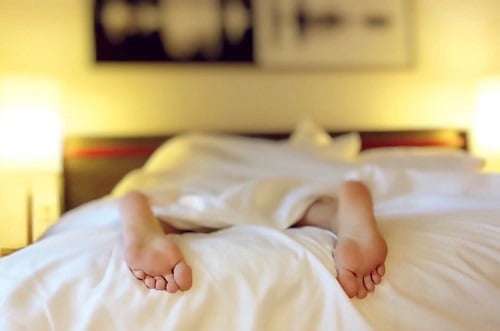Sleep Related Movement Disorders
Schedule an Appointment
Our Sleep Medicine team uses advanced technology to diagnose and treat sleep disorders at a variety of locations throughout the community. To schedule an appointment, call 216-778-5864.
Sleep-related movement disorders consist of a number of disorders that tend to affect patients only during or shortly before they fall sleep. While some occur during wakefulness such as Restless Legs Syndrome, and others only during sleep such as Periodic Limb Movement Disorder and Sleep-Related Bruxism (teeth grinding), some of these disorders can occur during both wakefulness and sleep, for example Sleep-Related Leg Cramps or Sleep-Related Rhythmic Movement Disorder.
An extensive history from the patient, and often the patient’s bed partner, are needed to determine the next steps in terms of testing and treatment. As Restless Legs Syndrome is the most common of these disorders, this will be briefly discussed.
Restless Legs Syndrome (RLS):
 This condition is characterized by an irresistible urge to move the legs or other body parts, often occurring at night when lying down, interrupting the process of falling asleep.
This condition is characterized by an irresistible urge to move the legs or other body parts, often occurring at night when lying down, interrupting the process of falling asleep.
About half of patients have a close relative with RLS. It is estimated that 10% of the US population has RLS, and it is even more common in patients with:
- Iron deficiency
- Type 2 diabetes
- Kidney failure
RLS can make it difficult to fall asleep. The recommended sleep time for adults is 7-8 hours/night, and difficulty falling asleep can cut into that time.
RLS has been associated with a reduced quality of life.
The inadequate sleep associated with RLS can increase the risk of many disorders, including:
- Daytime problems – such as driving/work accidents, memory or concentration problems
- Metabolic disorders – including obesity and glucose intolerance (a risk for diabetes)
- Cardiovascular disease – including heart attacks, heart rhythm disorders
- Stroke
- Pain intolerance
- Immune function – including infections and cancers
RLS is primarily a diagnosis made by explaining symptoms. There is no test yet to verify RLS. A sleep study can only suggest that you may have RLS.
If you think you may have RLS, or if you care for someone who may have RLS, print out the following questionnaire and bring it to your provider:
If you know you have RLS, tracking your symptoms using the International RLS Questionnaire is helpful for you and your provider.
Your Sleep Provider will need to rule out other causes of symptoms that mimic RLS, such as:
- Neuropathy – as is common in diabetes
- Vasculopathy – insufficient blood flow
- Leg cramps
- Restlessness - as is seen with medication side effects or some neurologic conditions
There are some things you can modify to help with your RLS symptoms, such as:
- Avoid caffeine, alcohol, and tobacco products.
- Avoid some over-the-counter medications that worsen RLS, such as ones containing diphenhydramine (an antihistamine)
- Exercise of legs at the beginning/end of the day (but > 4-6 hours before sleep time)
- Stretching exercises (most helpful)
- Running in place
- Riding an exercise bike
- Walking
- Massaging the calves and legs
- Soaking in a warm bath prior to bedtime
Your Sleep Provider can help to manage and treat your RLS symptoms by:
- Getting a comprehensive view of your symptoms and physical exam findings that may contribute to RLS.
- Recommending testing to screen for iron deficiency, and other causes of disorders that worsen RLS
- Treating disorders that may cause RLS
- Prescribing behaviors and medications (patches, pills) that will improve, and in many cases control, RLS symptoms
Additional information is available at:
- American Thoracic Society
- Restless Legs Syndrome Foundation
- American Academy of Sleep Medicine: aasm.org/resources/factsheets/rls.pdf